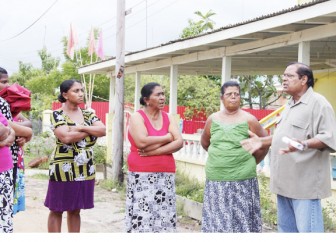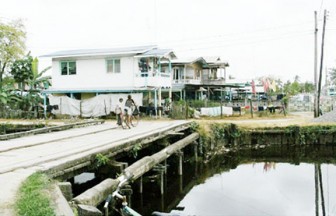-says has been addressing pollution problems since 2000
The Environmental Protection Agency on Friday denied a charge by the Alliance For Change (AFC) that it is taking a “soft” stance on the Cane Grove rice mill which residents in the area have been complaining about since 2000.
In a statement, the EPA said it has been addressing noise and dust pollution problems at the mill since 2000 and added that it has scheduled air quality tests to determine if emissions are within acceptable world standards.
Emissions from the Cane Grove mill saw residents turning last year to the AFC for help after they complained that top PPP/C officials had done nothing to ease the problem.
Last week after visiting the area, the AFC said it was outraged by the “soft stance” the EPA continues to take against the Cane Grove rice mill which it said has again flouted an ultimatum to remedy the dust pollution problem.
Dust from the Feyaadul Hakh mill has plagued the Cane Grove community for years despite promised interventions by former President Bharrat Jagdeo and more recently by President Donald Ramotar.
According to a Stabroek News report, on March 30, the EPA had given the mill notice to remedy all the problems affecting residents by April 30 or face closure. Despite the fact that that date has long since passed, when an AFC delegation, comprising vice chairman Moses Nagamootoo, executive members Gerhard Ramsaroop, Lenny Singh and Kojo McPherson, visited the community on October 10, the problem still prevailed.

The AFC believes that Hakh, a large miller who it says has strong ties to the PPP government is taking advantage of the residents, many of whom are his employees.
“It would appear, therefore, that he feels that that gives him sufficient licence to do as he pleases,” the party said, noting that other rice millers who operate in the area have had to install dust collection systems. Hakh has in the past declined to speak to the media about the pollution issues.
The AFC said that a resident, Jasoda Abdool, had to buy a blower to help control dust in her yard. She and her husband returned to Guyana after 24 years in the US and built a house but they cannot enjoy it because of the dust.
During the visit, the AFC also examined documents which showed that no environmental permit was granted to Hakh; nor was permission granted to erect additional silos. The party said it is disgusted that these breaches have been tolerated for so long and that despite past pledges to remedy them the situation still prevails.
Denying that it was “soft” on Hakh’s rice mill, the EPA said it would like to point out to the AFC that over the years, the issue relating to the noise nuisance was addressed and complaints regarding noise nuisance from the rice mill ended; however, dust pollution remained a major concern.
It added, “During the period from 2000 to present, the agency has been aggressive in recommending mitigation measures to the polluter, and conducting monitoring inspections of the rice mill to ensure that recommended measures were being satisfactorily implemented to reduce impacts on the receiving community. Numerous community meetings and joint inspections were also held with affected residents and all government officials related to the project such as the ministries of Agriculture and Local Government, Guyana Rice Development Board, NDC etc, to allow for residents to voice their concerns and propose and discuss further recommended measures for alleviation of the pollution.

“More recently, the EPA conducted bi-weekly inspections to assess the level of mitigation works completed, and noted that Mr Hakh has installed felted material within the Bag House to contain dust particle sizes of 2.5 micro metres and sealed all exposed vents/openings on conveyers and elevators with duct tape, installed higher pressure nozzle on the furnace, installed a sprinkler system, and enclosed the loading and offloading areas to prevent the escape of dust particles into the environment.”
The EPA said that despite these “extensive measures”, a few residents who it said are aligned with the AFC “claim to be affected by the operation. As such, the agency remains actively involved in the complaint resolution and has scheduled air quality monitoring to be done using the recently acquired air quality monitoring equipment, for the rice mill in order to determine whether dust particles are being emitted by the mill and if so, whether they are within acceptable world standards.”





